 W
WAn electric car is a car that is propelled by one or more electric motors, using energy stored in rechargeable batteries. Compared to internal combustion engine (ICE) vehicles, electric cars are quieter, have no exhaust emissions, and lower emissions overall. In the United States, as of 2020, the total cost of ownership of recent electric vehicles is cheaper than that of equivalent ICE cars, due to lower fueling and maintenance costs. Charging an electric car can be done at a variety of charging stations; these charging stations can be installed in both houses and public areas.
 W
WShai Agassi is an Israeli entrepreneur. He is the founder and former CEO of Better Place, which had developed a model and infrastructure for employing electric cars as an alternative to fossil fuel technology. The company went bankrupt in 2013, having spent over $850 million while deploying less than 1000 cars.
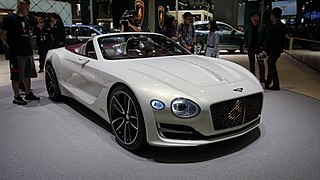 W
W W
WThe Bentley EXP 100 GT is a concept car introduced by Bentley for its 100th anniversary, on 10 July 2019. It is Bentley's vision of a GT car for 2035. The car is a fully electric 2-door coupe, can hit 60 mph in 2.5 seconds and has a top speed of 186 mph. The car's doors open vertically and are two-meter wide and the car is 5.8 meter long.
 W
WThe Chrysler ETV-1 was a passenger car produced by Chrysler as a test bed for motor and drive controls. With a motor produced by General Electric, it was claimed to be the "first ground up modern day electric vehicle design."
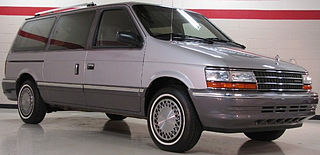 W
WThe second-generation Chrysler minivans are a series of minivans that were manufactured and marketed by Chrysler Corporation in North America and Europe from 1991 to 1995. Officially designated the AS platform by Chrysler, the second-generation minivans were an extensive revision of the first-generation chassis and body. As before, passenger and cargo configurations were sold by Dodge, Plymouth, and Chrysler divisions. The first minivans offered with driver-side airbags and with optional integrated child safety seats, the second-generation Chrysler minivans offered all-wheel drive as an option for the first time; a manual transmission would be offered for the last time in the North American market.
 W
WThe third-generation Chrysler minivans are a series of passenger minivans that were marketed by the Chrysler Corporation from the 1996 to 2000 model years. Designated the NS platform by Chrysler, these minivans were sold by Chrysler, Dodge and Plymouth divisions in passenger configurations; minivans were exported under the Chrysler brand. While the second-generation AS platform was a revision of the original vans, the NS platform marked the first ground-up redesign of the Chrysler vans since their 1984 introduction, ending the use of components from K-Car derivatives.
 W
WThe Citroën C1 ev'ie is an electric car conversion from a standard Citroën C1 by the now defunct Electric Car Corporation. The model was first released on 30 April 2009, with a 2010 list price of £19,860 this makes the C1 ev'ie a competitively priced electric car.
 W
WThe Citroën E-Méhari is a limited-production electric off-road subcompact SUV produced by the French car maker Citroën that began to be produced in 2016. Approximately 1,000 cars were planned to be produced in collaboration with the French electric car producer Bolloré. Sales began in France in spring 2016 with pricing starting at €25,000 excluding the battery leasing. It reaches a top speed of 110 km/h and accelerates 0–50 km/h in 6.4 seconds.
 W
WThe CityCar or MIT CityCar is an urban all-electric concept car designed at the Massachusetts Institute of Technology Media Lab. The project was conceived by William J. Mitchell and his Smart Cities Research Group. It is now led by Kent Larson, Director of the Changing Places Research Group at the Media Lab. The project came into reality in 2003 under the support of General Motors. Time Magazine choose the CityCar to be one of the "Best Inventions of 2007."
 W
WThe CityEl is a 3-wheel lightweight electric car originally designed and manufactured in Denmark, but currently made in Germany by Citycom GmbH.
 W
WThe Cree SAM, designed and developed by the Swiss company Cree, is a prototype zero emission battery electric vehicle. It is a tadpole three-wheel car, with two seats in a tandem arrangement.
 W
WThe Driving America Forward Act is legislation introduced in the U.S. Senate and House in 2019 that extends the federal tax credit for electric vehicle purchases. The Senate bill was introduced on April 9, 2019 by Democratic Senators Debbie Stabenow and Gary Peters, and Republican Senators Lamar Alexander and Susan Collins. The House bill was introduced by Democratic Congressman Dan Kildee.
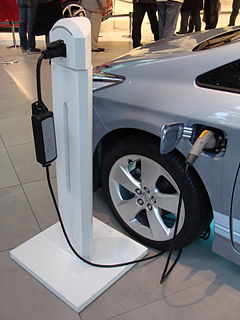 W
WGovernment incentives for plug-in electric vehicles have been established around the world to support policy-driven adoption of plug-in electric vehicles. These incentives mainly take the form of purchase rebates, tax exemptions and tax credits, and additional perks that range from access to bus lanes to waivers on fees. The amount of the financial incentives may depend on vehicle battery size or all-electric range. Often hybrid electric vehicles are included. Some countries extend the benefits to fuel cell vehicles, and electric vehicle conversions.
 W
WThe Enfield 8000 is a two-seater battery-electric city car, introduced in 1973 and developed in the United Kingdom by Isle of Wight company Enfield Automotive, owned by Greek millionaire Giannis Goulandris. The car was designed by a group of Greek and British engineers headed by Constantine Adraktas and production, immediately after its introduction, was moved to the Greek island of Syros. 120 cars were built in total, of which 65 were used by the Electricity Council and electricity boards in the south of England.
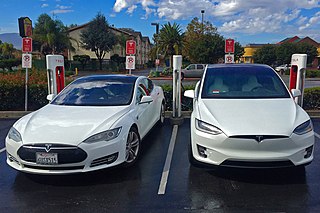 W
WElectric cars have different environmental impacts compared to conventional internal combustion engine vehicles (ICEVs). While aspects of their production can induce similar, less or alternative environmental impacts, some models produce little or no tailpipe emissions, and some have the potential to reduce dependence on petroleum and greenhouse gas emissions, depending on the source of electricity used to charge them, and health effects from air pollution. Electric motors are significantly more efficient than internal combustion engines and thus, even accounting for typical power plan efficiencies and distribution losses, less energy is required to operate an EV. Producing batteries for electric cars requires additional resources and energy, so they may have a larger environmental footprint from the production phase. EVs also generate different impacts in their operation and maintenance. EVs are typically heavier and could produce more tire, brake, and road dust, but their regenerative braking could reduce brake particulate pollution. EVs are mechanically simpler, which reduces the use and disposal of engine oil.
 W
WThe EVcort was an experimental electric car produced from 1981 to 1994 by Electric Vehicle Associates of Cleveland, Ohio, and later by Soleq Corp. of Chicago, Illinois. It consisted of a stock body and transmission from the Ford Escort, refitted with an electric propulsion system, every component of which was engineered and manufactured specifically for the car. It incorporated features such as regenerative braking and a multistep charging algorithm, that are common on modern electric vehicles but were quite innovative at the time. The intent was to produce a practical alternative-fueled vehicle with performance comparable to gasoline-powered cars, but like many electric vehicles of that era, the EVcort proved far too expensive to be commercially viable. Nevertheless, it was used extensively by a variety of institutions for electric vehicle demonstration and testing programs.
 W
WA Formula E car is an open-wheel auto racing electric car, powered by an electric motor. A Formula E car is designed to take part in the FIA Formula E Championship.
 W
WThe Henney Kilowatt was an electric car introduced in the United States of America for the 1959 model year. The car used some body parts as made for the Renault Dauphine. An improved model was introduced in 1960 with a top speed of 60 miles an hour and a range of 60 miles. Only 47 cars were sold over the two model years, mostly to electrical utility companies. Only a few still exist.
 W
WThe Lunar Roving Vehicle (LRV) is a battery-powered four-wheeled rover used on the Moon in the last three missions of the American Apollo program during 1971 and 1972. It is popularly called the Moon buggy, a play on the term dune buggy.
 W
WThe Microlino is an all-electric, space saving, lightweight four-wheeled vehicle produced by Micro Mobility Systems, designed for urban mobility. Its key feature is the front opening door, inspired by the bubble cars from the late 1950s, which enables users to get out directly onto the pavement after parking. The vehicle has two seats, a trunk, a folding sunroof and can be charged with either a household or a type 2 plug. The Microlino is legally designated and functionally intended as a lightweight quadricycle (L7e). It aims to combine the advantages of both a car and a motorcycle. Due to the "reduce to the max" approach in the engineering, the Microlino has 50% less parts than a regular car, weighing 513 kilograms and consuming less energy when driving.
 W
WThe Nissan Laurel is a front-engine, rear-drive two- and four-door sedan manufactured and marketed by Nissan from 1969 to 2002. Introduced in 1968 as a new model positioned above the 1968 Datsun Bluebird 510, the Laurel offered the luxury of the Nissan Cedric 130 in a smaller size. The laurel is a noble tree in Greek mythology, and the laurel wreath a symbol of honorable status. In Japan, the Laurel was not marketed as a Datsun, being always labeled as a Nissan.
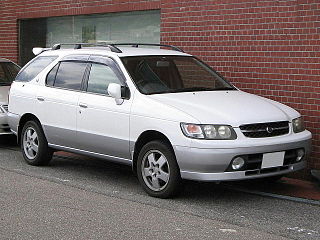 W
WThe Nissan R'nessa is a station wagon manufactured by Nissan from 1997 to 2001. According to Nissan, the name derives from "packaging renaissance for versatile, spacious comfort on wheels."
 W
WThe Nissan Townpod is an electric concept car presented by the Japanese car manufacturer Nissan at the 2010 Paris Motor Show.
 W
WSeveral plug-in electric vehicle fire incidents have taken place since the introduction of mass-production plug-in electric vehicles. As a result of these incidents, the United States, Department of Transportation's National Highway Traffic Safety Administration (NHTSA) conducted a study to establish whether lithium-ion batteries in plug-electric vehicles pose an exceptional fire hazard. The research looked at whether the high-voltage batteries can cause fires when they are being charged, and when the vehicles are involved in an accident.Regarding the risk of electrochemical failure, [this] report concludes that the propensity and severity of fires and explosions from the accidental ignition of flammable electrolytic solvents used in Li-ion battery systems are anticipated to be somewhat comparable to or perhaps slightly less than those for gasoline or diesel vehicular fuels. The overall consequences for Li-ion batteries are expected to be less because of the much smaller amounts of flammable solvent released and burning in a catastrophic failure situation.
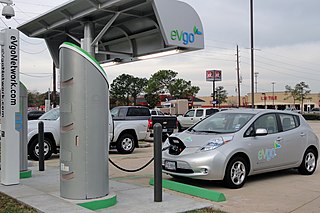 W
WRange anxiety is the fear that a vehicle has insufficient range to reach its destination and would thus strand the vehicle's occupants. The term, which is primarily used in reference to battery electric vehicles (BEVs), is considered to be one of the major barriers to large-scale adoption of all-electric cars. The term range anxiety was first reported in the press on September 1, 1997, in the San Diego Business Journal by Richard Acello referring to worries of GM EV1 electric car drivers. On July 6, 2010, General Motors filed to trademark the term, stating it was for the purpose of "promoting public awareness of electric vehicle capabilities". The Norwegian equivalent rekkeviddeangst was assigned second place in a list of Norwegian "words of the year" for 2013 by the Norwegian Language Council.
 W
WThe Renault Kangoo and the Renault Kangoo Express are a range of multi purpose vehicles manufactured and marketed by Renault across two generations since 1997 in commercial as well as passenger variants. As of December 2019, the electric variant, the Renault Kangoo Z.E., is Europe's top selling all-electric light commercial vehicle, with global sales of 48,821 units since its inception in 2011.
 W
WRevenge of the Electric Car is a 2011 American feature documentary film by Chris Paine, who also directed Who Killed the Electric Car?. The documentary, executive produced by Stefano Durdic, and produced by PG Morgan and Jessie Deeter, had its world premiere at the 2011 Tribeca Film Festival on Earth Day, April 22, 2011. The theatrical release to the public took place on October 21, 2011.
 W
WThe Roewe i6 is a compact sedan produced by SAIC Motor under the Roewe brand, succeeding the Roewe 550. The Roewe ei6 is the hybrid version of the i6. The Roewe i6 was previewed by the Roewe Vision-R, that debuted during the 2015 Guangzhou Auto Show.
 W
WThe Roewe i6 is a compact sedan produced by SAIC Motor under the Roewe brand, succeeding the Roewe 550. The Roewe ei6 is the hybrid version of the i6. The Roewe i6 was previewed by the Roewe Vision-R, that debuted during the 2015 Guangzhou Auto Show.
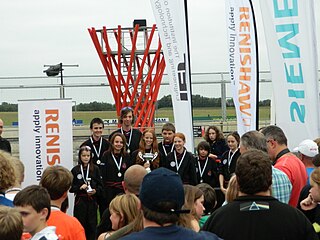 W
WRotary Racer is a Greenpower team which began in 2005 as an initiative within Chipping Sodbury School to try to get 'Lads and Dads' working together on a project to build and race their own electric racing cars. The team has grown, with 9 different cars being built in the past 9 years. The team is made up of both girls and boys, ranging between the ages of 11 and 18.
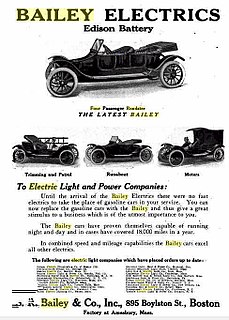 W
WS.R. Bailey & Company was an American manufacturer of electric automobiles from 1905 until 1916. They were based in Amesbury, Massachusetts, an early capital of automobile manufacture prior to the Great Depression.
 W
WThe Smart Forstars is a concept car produced by the Smart division of Daimler AG and unveiled at the 2012 Paris Motor Show. It can go up to 80 mph (129 km/h) with an 80 hp (60 kW) electric motor. It also has an all-electric drivetrain, which is nearly identical to the one used in the Smart Brabus electric drive. It is based on the same architecture of the Smart For-Us concept that was introduced in the Detroit Motor Show in 2012.
 W
WA solar car is a solar vehicle used for land transport. Solar cars usually run on only power from the sun, although some models will supplement that power using a battery, or use solar panels to recharge batteries or run auxiliary systems for a car that mainly uses battery power.
 W
WThe Solectria Force is a Geo Metro, professionally converted from a new, motorless chassis to become a battery electric vehicle. Converted by Solectria Corporation of Wilmington, Massachusetts, it is no longer in production. Approximately 400 vehicles were converted. The North Jersey District Water Supply Commission procured a 1996 Solectria Force that is still in service today. The original thirteen 12 volt lead–acid gel cell batteries lasted until April 2011, when they were replaced with nearly 10,000 miles.
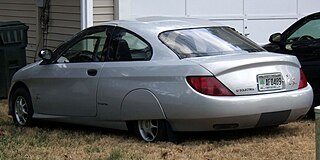 W
WThe Solectria Sunrise was an innovative electric passenger car, designed to be as efficient as possible to produce long range from available battery technology.
 W
WThe sQuba, developed by Swiss company Rinspeed, is the world's first car that can be driven both on land and under water. The original idea by Rinspeed founder and CEO Frank M. Rinderknecht was inspired by the 1977 James Bond film The Spy Who Loved Me. The chassis from the Lotus Elise is used as the base for this vehicle.
 W
WStrati is an electric car developed by Local Motors and manufactured in collaboration with Cincinnati Incorporated and Oak Ridge National Laboratory. It is the world's first electric car to heavily utilize 3D-printing during the production process. The car was manufactured using a Large Scale 3D Printer developed by ORNL and Cincinnati Inc. The car took just 44 hours to print during the 2014 International Manufacturing Technology Show in Chicago, Illinois. The printing was followed by three days of milling and assembling, with the completed car first test-driven on September 13, 2014. Strati is claimed to be the world's first 3D-Printed electric car.
 W
WThe StreetScooter C16 was an electric car shown in 2014 by the electric vehicle manufacturer StreetScooter.
 W
WThink Global was an electric car company located in Bærum, Norway, which manufactured cars under the TH!NK brand. Production of the Th!nk City was stopped in March 2011 and the company filed for bankruptcy on June 22, 2011, for the fourth time in 20 years. The company was bought soon after by Electric Mobility Solutions AS and production ceased in August 2012 with no more announcements regarding future production. As of October 2010, a total of 2,500 units had been manufactured at Oslo-based TH!NK’s production facility.
 W
WThe Twike is a human-electric hybrid vehicle (HEHV) designed to carry two passengers and cargo. Essentially a velomobile with an electrical hybrid engine, it can be driven in electric-only mode or electric + pedal power mode. Pedaling warms the user, making electric heating in winter unnecessary, extends the range of the vehicle but does not substantially add to the vehicle's top speed.
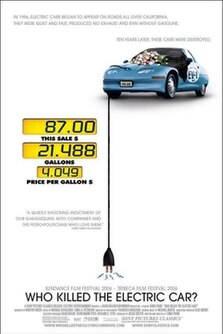 W
WWho Killed the Electric Car? is a 2006 documentary film directed by Chris Paine that explores the creation, limited commercialization, and subsequent destruction of the battery electric vehicle in the United States, specifically the General Motors EV1 of the mid-1990s. The film explores the roles of automobile manufacturers, the oil industry, the federal government of the United States, the California government, batteries, hydrogen vehicles, and consumers in limiting the development and adoption of this technology.